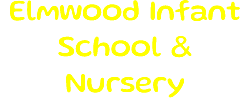The learning of phonics is a key skills for our children to acquire in order to learn how to read, write and spell. By learning phonics, children will develop their curiosity in cracking the code and being able to understand how letters link to sounds. This will allow them to read and write words and sentences with confidence. All members of staff have received training in delivering Little Wandle.
At Elmwood Infant School we used the DfE validate phonics program; Little Wandle; Letters and Sounds. The program was adopted by our school because it is grounded in clear theory on how children learn phonics and is clear and structured in a way which supports the majority of our children.
Please visit the Little Wandle Letters and Sounds link as it contains a wealth of information for parents on the implementation of program as well as resources to support the learning of phonics at home.
For parents – Letters and Sounds (littlewandlelettersandsounds.org.uk)
How is Phonics Taught at Elmwood Infant School? (Phonics Implementation)
In Nursery
Children is Nursery are exposed to early phonics through distinguishing between different sounds. These could be sounds in nature , sounds locally or musical sounds. The children will be encouraged to find their first names as part of self-registration at the start of session. At these times, children are beginning to see that their names are built up of letters and some letters appears either more than once in their names or in the names of their friends and words in their environment. This curiosity will encourage children to start to identify words from pictures. Children will be exposed to the Little Wandle resources in Nursery, so they are familiar with the resources before they start Reception.
In Reception
Children start Reception the academic year in which they turn 5 years old. Although, some of our children will have attended our Nursery classes, we recognise that not all children will have, so they will have varied experiences of phonics.
Children in Reception will be taught phonics daily. They will be taught different letters with their corresponding sounds. The children will not be taught phonics in alphabetical order, instead phonics teaching starts with the most used letters in the English letter language which are s,a,t, then p,i, n. Children move on to learning digraphs and trigraphs ( one sound made up of two or their letters).
In addition to the daily phonics sessions, children revisit the GPCs they have been taught in their reading practice groups. These consist of small groups of children of a ability with phonics who are taught to recognise sounds and read words, before reading a book at their own pace.
Year 1
At the end of Year 1, usually in June. All Year 1 children take part in a phonic check. The check will assess which GPCs the children have learned. Children in Year 1 have at least one phonics session a day. With the Little Wandle program, the children are assessed regularly to check that they have fully learned the GPCs. Where the GPCs have not been fully learned, children attend short, specific additional phonic sessions called Keep Up sessions. These are delivered by trained members of staff.
Year 2
The expectation with Little Wandle is that most children will have exited the Little Wandle program, by the time they reach Year 2. However, where children have not passed the Phonic Check at the end of Year 1, they will have to continue with the phonics program and can retake the check in Year 2.
